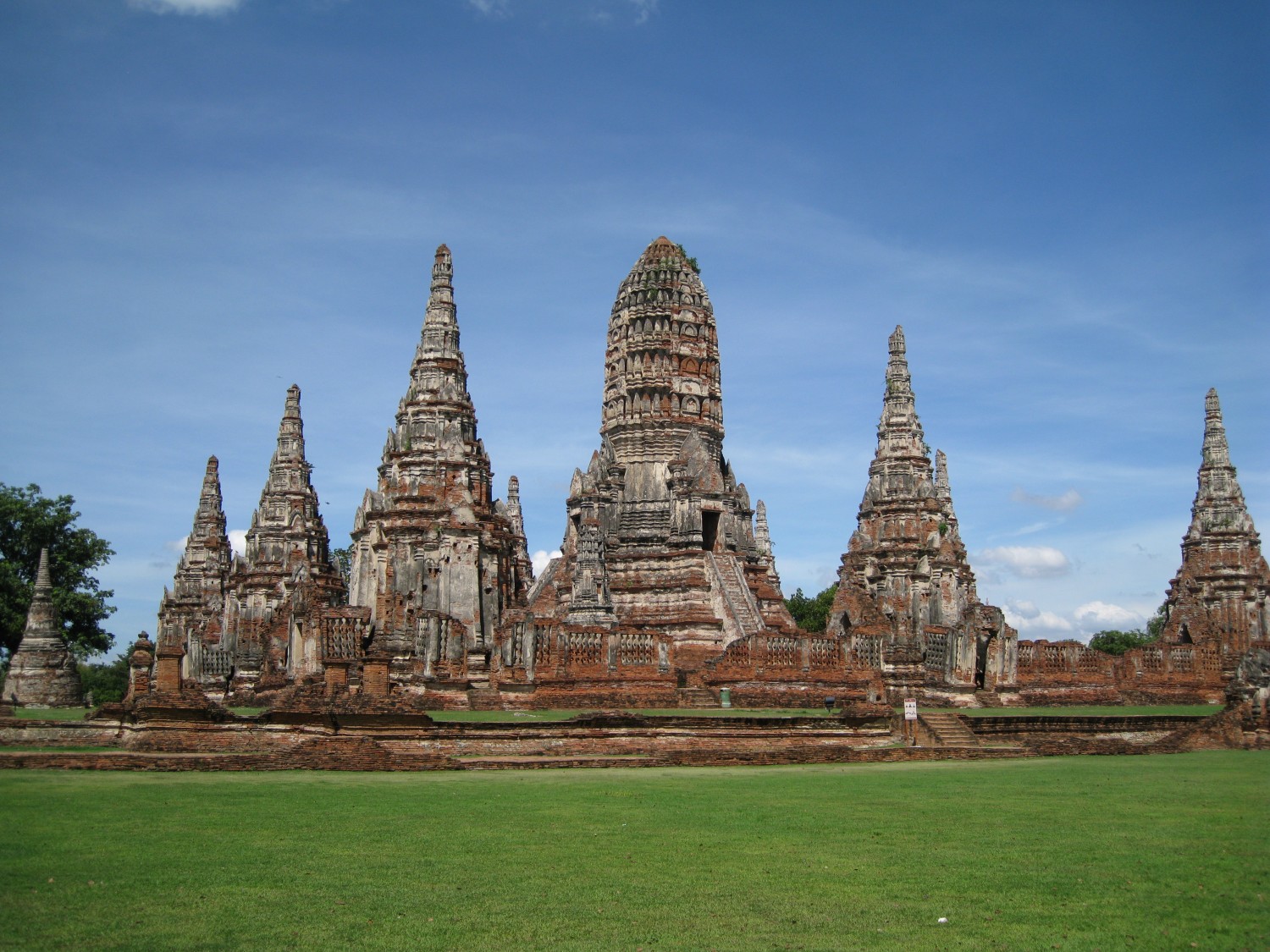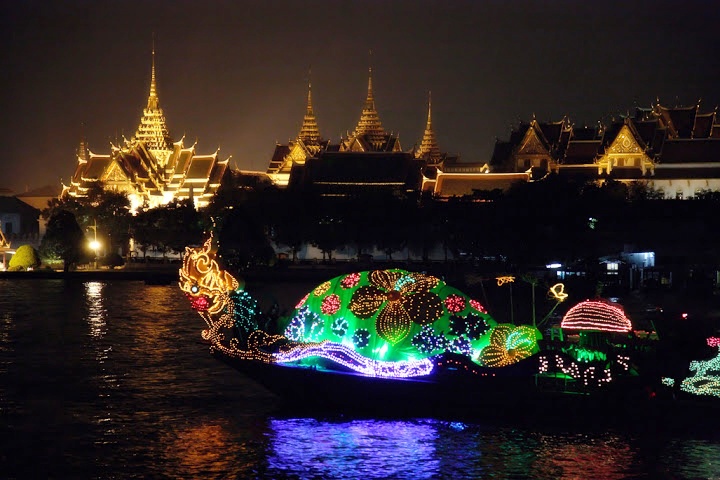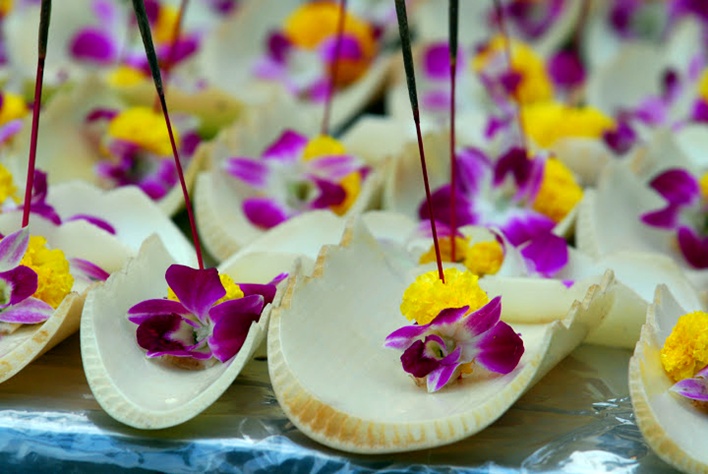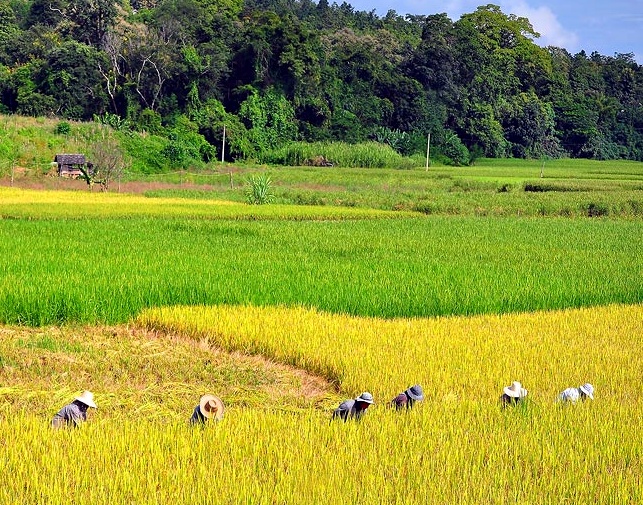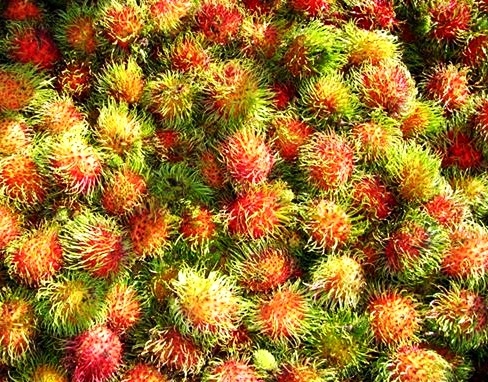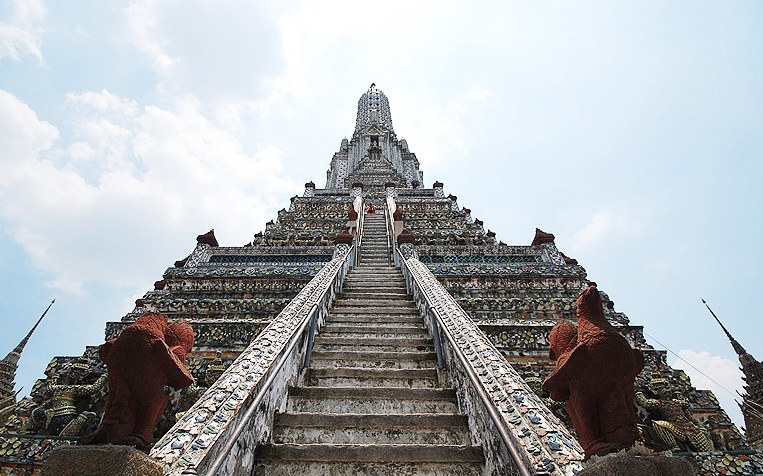

-
ThailandDestination: Thailand Overview
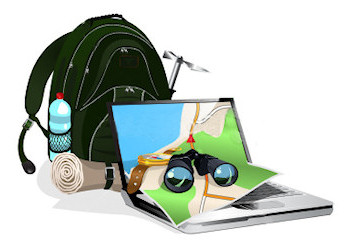 Travel Guides Description
Travel Guides Description
The Kingdom of Thailand lies in the heart of Southeast Asia, making it a natural gateway to Laos, Cambodia, Vietnam, Myanmar and Southern China. Its shape and geography divided into five regions: the mountains and forests of the North; the vast rice fields of the Central plains; the semi-arid farm lands of the Northeast plateau; the beaches of the Eastcoast and the tropical islands and long coastline of the Peninsula South.
Due to the economic growth of the past several years, Thailand is now one of the most developed countries in South East Asia while the strong cultural values of the country have been influenced. Wherever you are in Thailand, you will feel a cultural atmosphere that still feels the same. This means that despite the economic progress culture has always been preserved. Thailand is a unique location, especially Bangkok, the gateway for travelers to South East Asia. In Bangkok you will experience a mix of cultures and people from all the surrounding continents, a true metropolis.
As a holiday destination, Thailand offers a successful combination of rich (cultural) history, a large variety of sights and highlights, good infrastructure, excellent and numerous beaches, fantastic hotels, delicious cuisine, great natural landscape, good value for money. All this is complemented by perhaps the most important and most attracting element; the Thai hospitality, famous for its honest and sincere service. Because of this, Thailand has become a holiday destination travelers want to travel back to. Welcome back instead of a first welcome is not unfamiliar for service staff in hotels The Kingdom of Thailand lies in the heart of Southeast Asia, making it a natural gateway to Laos, Cambodia, Vietnam, Myanmar and Southern China. Its shape and geography divided into five regions: the mountains and forests of the North; the vast rice fields of the Central plains; the semi-arid farm lands of the Northeast plateau; the beaches of the East-coast and the tropical islands and long coastline of the Peninsula South.
Due to the economic growth of the past several years, Thailand is now one of the most developed countries in South East Asia while the strong cultural values of the country have been influenced. Wherever you are in Thailand, you will feel a cultural atmosphere that still feels the same. This means that despite the economic progress culture has always been preserved. Thailand is a unique location, especially Bangkok, the gateway for travelers to South East Asia. In Bangkok you will experience a mix of cultures and people from all the surrounding continents, a true metropolis
As a holiday destination, Thailand offers a successful combination of rich (cultural) history, a large variety of sights and highlights, good infrastructure, excellent and numerous beaches, fantastic hotels, delicious cuisine, great natural landscape, good value for money. All this is complemented by perhaps the most important and most attracting element; the Thai hospitality, famous for its honest and sincere service. Because of this, Thailand has become a holiday destination travelers want to travel back to. Welcome back instead of a first welcome is not unfamiliar for service staff.
Location Siam is the name by which Thailand was known to the world until 1939 and again between 1945 and 1949. On May 11, 1949, an official proclamation changed the name of the country to "Prathet Thai", or "Thailand", by which it has since been known. The word "Thai" means "free", and therefore "Thailand" means "Land of the Free." Geography The Kingdom of Thailand, located in Southeast Asia on the Gulf of Thailand and the Andaman Sea, shares boundaries with Myanmar (Burma) on the west and northwest, Laos on the east and northeast, Cambodia (Kampuchea) on the southeast, and Malaysia on the south. Thailand, although rich in rubber and in mineral resources, was never colonized by Europeans and has existed as a unified monarchy since 1350. The capital, Bangkok, an attractive blend of Western and Thai architecture, was established in 1782. Thailand covers a land area of 513,115 square kilometers, and extends about 2,500 kilometers from north to south and 1,250 kilometers from east to west, with a coastline of approximately 1,840 kilometers on the Gulf of Thailand and 865 kilometers along the Indian Ocean.
Topography Thailand is divided into four natural regions:
The North
The Central Plains or Chao Phraya River Basin
The Northeast or the Korat Plateau
The South or the Southern PeninsulaClimate The climate is tropical with long hours of sunshine and high humidity. There are three seasons:
Hot from March to June.
Rainy from July to October.
Cool from November to February.
Average low temperature is 20°c and high temperature is 37°c. The geographic and climatic conditions make the country suitable for the cultivation of a wide range of tropical and semi-tropical agricultural crops.Culture Thailand's culture is about mutual respect and politeness that binds the country's people together. Thai culture evolves largely around Buddhism and respect for seniority, whether in terms of age, status or wealth. However, monks receive absolute deference and it is common to see healthy young monks sitting on buses while elderly passengers stand.
Seniority has different forms: younger people respect elders, the poor look up to the rich, and common citizens defer to politicians and high ranking military personnel. Seniority in years is sometimes unclear, so Thais often ask a person's age. With seniority established, the older person may address the younger as nong, and the younger person may address the older as pii.
Seniority is complex and involves unwritten obligations. For example, a manager dining with her staff will automatically pay the bill, regardless of the ages of those present. Some visitors find this unfair. A common assumption in Thailand is that foreigners are rich and should therefore pay higher prices than locals; hence the two-tiered pricing system seen at many tourist attractions.
A traditional greeting is the wai, made by pressing the fingers and palms together at chest level while slightly bowing the head. The wai serves several functions: saying hello, showing respect to a senior and asking forgiveness. A wai is always returned, unless it is from a child.
Keeping calm is important, and outward displays of anger are unwelcome. People generally overlook minor misdeeds, and even major offences are dealt with as discreetly as possible. Patience is a virtue.
While politeness is in style all over the world, there are a few guidelines you can follow that your Thai hosts will appreciate.
In Thailand, almost everything in life involves a smile, even blunders and mishaps. Westerners often mistake this for being laughed at. For example, if a waitress forgets an order and laughs, she is not showing contempt, just making the best of a bad situation. If you complain, do so gracefully as anger usually gets you nowhere.
Cleanliness and neatness are also important. In tropical Thailand, never put off showering or doing your laundry. Most Thais keep themselves scrupulously clean and dress respectably. T-shirts, sandals and knee-length shorts are suitable for informal occasions, but visits to palaces, government offices and some temples usually require something more appropriate. Nudity is forbidden, and topless bathing can offend, even though it is tolerated on some tourist beaches.
The head is high and the feet are low, both physically and spiritually. Never touch anyone's head, and avoid gesturing (especially towards a Buddha image), moving things and touching people with your feet, even if you do see people doing it to their friends. Before entering a temple or a person's home, remove your shoes.
Shared meals are served in separate dishes with serving spoons. If someone invites you to eat, use the serving spoons to put food on your plate, not your personal spoon. Take small amounts of all the food instead of keeping one kind for yourself. Using a toothpick after the meal is acceptable if you cover your mouth with one hand.
Language Thailand's official language is THAI (also known as Siamese). The Thai language Is not as difficult as you may think. Learning a few basic words will make your stay in Thailand more rewarding. Thai has 44 consonants and 32 vowels and diphthongs. Thai has five tones: mid, low, falling, rising and high, which with practice basic words and phrases are relatively easy to master. Most of the difficulty in mastering basic Thai comes from getting used to the new and different sounds. Once your ears become accustomed to the overall phonetic system, the rest is fairly easy. The grammar is very straightforward; words do not change to signify tense, gender or plurality, and there are no articles. Translations from Thai script to roman are sometimes confusing. With no clear rules, one Thai word may have several roman spellings. For this reason, many Thai language guides give different spelling of words. Head of State H.M. King Bhumibol Adulyadej (Rama IX of the Chakri Dynasty) Prime Minister Ms. Yingluck Shinawatra National Flag The red, white, and blue stripes symbolize the nation, Buddhism, and the monarchy, respectively. Time The time in Thailand is seven hours ahead of Greenwich Mean Time (+7 hours GMT). Electricity The electric current is 220 volt AC (50 cycles) throughout the country. Many different types of plugs and sockets are in use. Travellers with electric shavers, hair dryers, tape recorders and other appliances should carry a plug adapter kit. The better hotels will make available 110-volt transformers. Currency The Thai Currency is the Baht.
Major denominations are 1, 5, 10 Baht coins;
10, 20, 50, 100, 500 and 1000 Baht notes.Exchanging Money Major currencies can be exchanged at the airports and at banks and small Exchanges in the major centers such as Bangkok and Phuket. Generally you will get a much better rate in Thailand than in Europe or the USA, with rates just a few points below published international bank transfer levels. Credit Cards Major Credit Cards are accepted in larger hotels, restaurants, shopping centers and travel agents. Howeve, many of the smaller operators will impose a credit card surcharge of 2 or 3%. Water Tap water is clean but drinking from it directly should be avoided. Bottled water is recommended. Clothing Light, cool clothes are sensible and a jacket is needed for formal meetings and dining in top restaurants. Shorts (except knee length walking shorts), sleeveless shirts, tank tops and other beach-style attire are considered inappropriate dress when not actually at the beach or in a resort area. Weights & Measures The metric system is used throughout Thailand. Numerals on vehicle speed ohmmeters, highway markers and speed limits all indicate kilometres Economy The Thai economy is one of the most robust in Asia. In the 1960s it was a predominantly agricultural economy largely dependent on its rich produce of crops such as rice, cassava, maize, rubber, and sugar cane, along with its seafood production, primarily of shrimp. Its strategic location and bountiful natural resources has enabled the country to maximize trade opportunities. The 1980s to mid-1990s marked its boom years and its emergence as a diverse, modern, and industrialized economy.
The economy's growth can be attributed to several factors. First, Thailand has pursued a rational approach to industrialization. Prior to its attempt at industrialization, Thailand already had a stable agricultural sector which became the springboard for industrialization. In the 1960s, its first attempt at industrialization was characterized by the strategy of import substitution which centered mainly on food processing. Hence, Thailand used the produce of its agricultural sector to initiate a shift into industrialization. The availability of local laborers, combined with abundant natural produce, enabled the country to increase production and shift to manufacturing or processing products for export purposes. This led to the rapid expansion of the manufacturing sector and a marked increase in exports. This approach enabled Thailand to avoid the usual path taken by newly industrialized economies (NIEs) of pursuing industrialization at the expense of the agricultural sector. The strategy was to gradually build upon existing resources in order to facilitate the development of the economy.
A second important factor was Thailand's diversification of its economy. This is a pervasive trend in the development of the economy, which is rooted in the innate flexibility of the Thai people. This is exemplified by the stages of growth of the industrial sector which began with simple agri-based manufacturing, and steadily progressed to more sophisticated industries through the use of available resources such as rich natural resources and cheap labor. Diversification was also aided by huge inflows of foreign direct investment geared towards a wide range of products, namely electronics, chemicals, property, and processed food. In the 1980s, foreign direct investment totaled US$8 billion, with US$2.5 billion coming from Japan and the rest from Chinese, Korean, and American investors. In fact, 50 percent of the country's industrial output and 20 percent of its industrial workforce are attributable to foreign investors who are attracted by lower manufacturing costs, according to Thailand's Turn.
A third factor in Thailand's growth is government stability. The administration of Prime Minister Prem Tinsulanonda, which lasted from 1980 to 1988, developed a continuity in policies and programs that inspired the confidence of the private sector in both the government and the economy. This translated to a greater willingness to invest in the growing manufacturing industry and support further expansion of export activities.
Fourth, the dynamism of the private sector propelled export production. In 1981, a landmark policy was implemented which facilitated the formation of the Joint Public-Private Consultative Committee on Economic Problems that enabled businesspersons to influence public policy through their associations. This, in turn, led to an increased participation of the private sector in the development of state enterprises. Economic development in the country was largely propelled by the private sector, which invested heavily in industrial growth; the government had a limited role in determining the direction of the economy.
These factors have contributed greatly to the growth of the country's major economic sectors, namely agriculture and fishing, manufacturing and industry, and services, particularly tourism. In 1991, 98.6 percent of all Thai business enterprises were mainly small and medium enterprises, accounting for 90.7 percent and 7.6 percent, respectively. The Ministry of Industry defines small-scale enterprises as those with a maximum of 50 employees with an equity of 10 million baht, while medium-scale enterprises employ 50-200 personnel and have an equity of 10-100 million baht.
The country's inability to produce oil has negatively impacted its growth, particularly during periods of oil crisis such as the world oil crisis between 1970 and 1979. The country's dependence on oil has been reduced with the discovery of its first natural gas field in the Gulf of Thailand in 1981. The country also taps alternative domestic sources of energy such as hydropower, liquefied natural gas, and coal. It is also in the process of studying the use of nuclear power.
At the end of 1990, the country's long-term external debt stood at about US$16 billion. However, annual debt service payments were only equivalent to 10 percent of the total earnings from exports, which means that the debt payments were manageable. The 1997 Asian financial crisis reversed this situation as the combination of US$90.5 billion in debt in 1996-97 and high levels of non-performing loans caused the near collapse of Thai-land's financial sector. The troubles of the financial sector spilled over to the other sectors of the economy which were dependent on the financial sector for credit. Banks had to set aside finances to cover loans which creditors were not able to pay, so they no longer had any money to lend borrowers who were capable of paying. This forced the government to increase its allocation for foreign debt payments to take the pressure away from the financial sector. This resulted in a significant increase in public sector debt, which was only equivalent to 4 percent of GDP in 1996 but rose to 18 percent of GDP by mid-1999.
To alleviate the effects of the crisis, the International Monetary Fund (IMF) gave Thailand a US$17.2 billion assistance package in August 1997. With the help of these funds, reforms in the financial sector were implemented along with the restructuring of the industrial and agricultural sector to increase productivity. Policy reforms to increase accountability and transparency, as well as social reforms to improve education, social services, and human resource development are also being implemented by the government with assistance from the IMF, the Asian Development Bank (ADB), the Overseas Economic Co-Operation and Development (OECD) Fund, and the World Bank.
Business hours Government offices open from 08.30 to 16.30 hours, Monday to Friday.
Banking hours : Monday to Friday, 08.30 to 15.30 hours
Most business offices open from 08.30 to 17.30 hours, Monday to Friday.
Some work on Saturday.Telephone Services 1. Local calls All telephone numbers for local calls, long distance calls within the country and all mobile phones have nine digits, starting with 0.
• For Bangkok calls, it is 0 + 2 + numbers, e.g. 0 2250 5500.• For provincial calls, it is area code + numbers, e.g. 0 5323 6400 for Chiang Mai (053 is the area code for Chiang Mai) ; 0 7623 6400 for Phuket (076 is the area code for Phuket).
2. International calls
• The international dialling code for Thailand is 66.
• To direct dial a foreign number from a private phone, dial 001 + country code + area code + telephone number.Postal Services Thailand's mail service is reliable and efficient. Major hotels provide basic postal services on their premises. Provincial post offices are usually open from 8.00 a.m. to 4.30 p.m.
International Roaming Mobile Phone : A Subscriber Identity Module Card (SIM Card) is now available for Thai and foreign customers who are travelling around for work. The SIM Card must be used in conjunction with a Digital GSM mobile phone within the 900-MHz range or a Digital PCN mobile phone within the 1800-MHz range.
Wifi and Internet Internet cafes are widely available everywhere and are easily found in major towns and cities. Prices are reasonable, but may vary from 10 - 60 baht an hour. In many Internet cafes, you can buy pre-paid international phone cards to dial from a computer to a landline or mobile phone worldwide. Most Internet cafes are equipped with webcams, headsets and microphones. Wi-Fi hotspots are becoming increasingly available at most hotels and public spaces in Bangkok. Many hotels also have business centers with PCs connected to the Internet or in-room broadband access. Please note that this service is not always free and the rates are usually cheaper at internet cafes.
People Thais are well-known for their friendliness and hospitality. A large majority of over 65 million citizens of Thailand are ethic Thai, along with strong communities whose ethnic origins lie in China, India and elsewhere. About 7 million people reside in the capital city of Bangkok.
Thai (80%), Chinese (10%), Malay (3%), and the rest are minorities (Mons, Khmers, hill tribes) Ethnic Thais form the majority, though the area has historically been a migratory crossroads, and has thus produced a degree of ethnic diversity. Integration is such, however, that culturally and socially there is enormous unity.
The Family
Perhaps the best way to comprehend Thai socia1 values is to focus on its basic unit, the family, and in particular the rural family in its typical village setting. Generally this will be an extended family, with several generations living under one roof, or at least under several roofs within the same compound; and it is here that the Thai child learns codes of behavior that will guide him throughout much of his later life, whether it is spent in the village or beyond.
In a village, home is usually a simple wooden house raised on posts; domestic animals like buffalos, pigs, and chickens are kept below, and the family lives above, often in a single room. There is little privacy, though this is not as highly regarded as in Western countries, and the communal life style instills a strong sense of social harmony in which tact compromise, and tolerance are essential.. The father is regarded as the leader, but the mother also plays a significant role, particularly in the family finances.
When small, children are treated permissively by various members of the family, which as likely as not will include grandparents and sometimes more distant relatives as well. Respect for elders is taught very early, however, and by the time a child walks he is aware of his position in the family hierarchy, a distinction that applies not only to the relationship between parents and children but also to that between siblings of different ages. This same delineation of roles also applies to the wider world outside the family and will remain deeply ingrained throughout life, thus explain-ing the reluctance of younger Thais to oppose or otherwise confront a senior during their subsequent careers in business or government.
A sense of responsibility is also inculcated in early childhood. Each child is assigned certain duties according to age and ability feeding livestock, leading the family buffalo to graze in nearby pastures, taking care of younger brothers and sisters while parents are at work in the fields. As they grow older, responsibilities increase and they are allowed to participate in family discussions, with their opinions taken into account when important decisions are made.
One of the prime responsibilities placed on children is that of taking care of parents in their old age, a prominent feature of the Thai concept of family. There is no feeling of being inconvenienced by this duty of caring for aged parents; on the contrary, their acquired wisdom gives them an honored place in the household, and their counsel is actively sought in teaching their grandchildren and great-grandchildren to be responsible adults with the same traditional values.
Village Organization and Leadership
Beyond the family, the next larger unit of social organization is the village. Although there are regional variations in house styles and crop cultivations, and the setting may vary, in essence Thai villages are remarkably similar, revolving around well-defined climatic, religious, and farming seasons.
The typical village contains around 100 to 150 households, or an average of 500 to 700 inhabitants. The houses are nearly all simple wooden structures elevated on stilts as protection against flooding and unwelcome animal intruders and also to improve air circulation. A small wooden granary, also on stilts, is often found beside the house, together with large earthenware jars in which rainwater is stored for drinking. Most villages now have electricity and water.
On the village outskirts are the local school and the wat or Buddhist monastery, sometimes adjacent to one another, sometimes at opposite ends of the village. The school is generally a simple wooden building, perhaps a single room where several classes are held simultaneously; an essential feature is the flagpole upon which the Thai flag is ceremoniously raised each school morning and lowered in the evening. The monastery, constructed and maintained largely through local donations and thus reflecting the village's wealth, is often separated from the community by an open field to give the resident monks maximum privacy and seclusion for their religious activities. This grassy expanse also serves as the village common, a place where children assemble to play kickball and where local fetes are held.
The village is self-governing, led by an elected headman, or phu-yai-ban, who until recent years was always a man; since 1983, however, women have also been elected to the position. A candidate is not affiliated with any political party but must be a literate Thai householder who has resided in the village at least six months and be at least 25 years old. If he retains the villagers' esteem, the phu-yai~bin can remain in the post until retirement at 60 through repeated reelections; by the same token, he can be removed if he forfeits their respect.
The phu-yai-ban preserves the social harmony valued so highly by all Thais by skilfully settling minor disputes, taking care to ensure that neither party feels cheated or loses face. In addition, he keeps the village birth and death records and acts as a spokesman for the community in negotiations with the government bureaucracy.
Administratively, neighboring villagers are organized into groups known as tambon which, depending on topography and population density, consist of two to 28 villages. The phu-yai-ban within each tambon elect one of themselves to be kamnan, or commune head-person. Thailand has nearly 5,000 tambon at present. The kamnan is chairman of. a committee which often includes a government school headmaster, an agricultural extension worker, and sometimes a Health Department doctor or paramedic in charge of a local clinic. It also contains at least, two men selected by the nai amphoe or district officer, who is the kamnan's immediate superior or appointed by the provincial governor.
This committee is responsible for deciding, which villages should have new roads, irrigation budgets and health services, while the kamnan's main individual responsibilities are to see that justice prevails within the commune, to maintain records and statistics, to help preserve peace, to assist in collecting taxes, and to act as the intermediary between the district officer and all village headpersons in his tambon.
The wat is the focal point of the village, symbolizing the Buddhist religion and also acting as the major unifying element, particularly during festivals and merit-making ceremonies when it also becomes a social center for young and old alike. Abbots and senior monks frequently enjoy more prestige and moral persuasion than the village head, and in times of personal crisis they are often the first whose advice is sought. Within the wat the abbot has absolute administrative, clerical, custodial, disciplinary, and spiritual responsibilities, and they determine the monastery's relationship with the village. If an abbot is scholarly, meditative, and retiring, the monastery is unlikely to concern itself much with mundane village affairs. On, the other hand, if one is a dynamic personality he may make the wat a community center with a subtle but powerful influence on social action. Every young man in the village, before he starts his own family, will spend a period of study and reflection in the wat, thus increasing the influence of Buddhism.
Social Values
Buddhist teachings are at the root of the typical Thai villager's sincere consideration for others, embodied in the virtue known as namchai, "water of. the heart," a concept encompassing spontaneous warmth and compassion that allows families to make anonymous sacrifices for friends and to extend hospitality to strangers. For example, a stranger visiting a village will rarely be seen as an intruder and a subject for suspicion and distrust. Much more likely, the villagers will have the namchai to take him in, feed him, offer him a bed in one of their homes, and generally treat him as a friend. Buddhism also lies behind such common expressions as mai pen rai (or "never mind, it doesn't matter") when something unfortunate happens, reflecting the feeling that one must gracefully submit to external forces beyond one's control, such as the effects of past karma.
Although highly individualistic and resisting regimentation, Thais nevertheless realize that inner freedom is best preserved in an emotionally and physically stable environment. Therefore, they believe that social harmony is best maintained by avoiding any unnecessary friction in their contacts with others.
From this has grown the strong Thai feeling of krengchai, which means an extreme reluctance to impose on anyone or disturb his personal equilibrium by direct criticism, challenge, or confrontation. In general, people will do their utmost to avoid personal conflict. Outward expressions of anger are also regarded as dangerous to social harmony and as being obvious signs of ignorance, crudity, and immaturity.
Within such a behavioral framework, Thais share very definite views on what constitutes friendship and enjoyment. Sincere friendship among Thais is extremely intense; the language is rich in expressions which reflect the degree of involvement and willing self-sacrifice. Such relationships are found particularly among men. A 'phuan tai"- literally , "death friend"-is a companion for whom it would be an honor to die. Should a friend become involved in difficulties, his friend feels an obligation to help him, regardless of the danger to himself, because "tong chuai phuan " -"One must help one's friends." This requirement is a sensitive point of honor and explains many circumstance that often baffle outsiders.
On the level of acquaintanceship, politeness predominates. When greeting people, Thais will usually, show their concern for others' health by remarking how "thin" or "fat" he or she has become. The remark is intended as a gesture of friendship.
Holidays Public holidays in Thailand are regulated by the government, and most are observed by both the public and private sectors. There are usually sixteen public holidays in a year, but more may be declared by the Cabinet. If a holiday falls on a weekend, one following workday is observed as a compensatory non-workday. 01 January New Years Day Celebrates beginning of the solar and Gregorian year. From 1889–1941, this was held on 1 April. 14 February Thai lunar month, Makha Bucha - Buddhist observance commemorating the Buddha's teaching of Ovada Patimokkha. 6 April Chakri Memorial Day, Commemorates the establishment of the Chakri Dynasty and the founding of Bangkok by King Buddha Yodfa Chulaloke in 1782. Officially known as King Buddha Yodfa Chulaloke the Great Day and Chakri Dynasty Memorial Day 13 April – 15 April Songkran Festival: Traditional Thai new year, and prime holiday of the year; many people return home for family reunions during this period. 01 May Labour Day, May 1st, or following Monday if it falls on a weekend. 5 May Coronation Day - Commemorates the coronation of King Bhumibol Adulyadej in 1950 May arbitrary date: Royal Ploughing Ceremony and Farmer's Day - Ceremony giving blessing to the country's farmers. 13 May Thai lunar month: Vesak - Buddhist observance commemorating the birth, enlightenment and passing of the Buddha. Also observed as National Tree Day. 11 July Asalha Bucha - Buddhist observance commemorating the Buddha's first discourse, the Dhammacakkappavattana Sutta. 12 August HM the Queen's Birthday - Commemorates the birthday of Queen Sirikit in 1932; also observed as National Mother's Day 23 October Chulalongkorn Day - Commemorates the passing of King Chulalongkorn in 1910. 5 December HM the King's Birthday - Commemorates the birthday of King Bhumibol Adulyadej in 1927. Also observed as National Day and National Father's Day. 10 December Constitution Day - Commemorates the promulgation of the first permanent constitution in 1932. 31 December New Year's Eve - Final day of the Gregorian year. 1 Shawwal in the Islamic calendar Eid ul-Fitr Muslim holidays, observed in Narathiwat, Pattani, Yala, and Satun Provinces. 10 Dhu al-Hijjah in the Islamic calendar: Eid al-Adha Muslim holidays, observed in Narathiwat, Pattani, Yala, and Satun Provinces.  Remarks
Remarks
Thailand is one of the most strongly Buddhist countries in the world. The national religion is Theravada Buddhism, a branch of Hinayana Buddhism, practiced by more than 90 % of all Thais.
The remainder of the population adheres to lslam, Christianity, Hinduism and other faiths all of which are allowed full freedom of expression. Buddhism continues to cast strong influence on daily life. Senior monks are highly revered. Thus, in towns and villages, the temple (wat) is the heart of social and religious life. Meditation, one of the most popular aspects of Buddhism, is practiced regularly by numerous Thai as a means of promoting inner peace and happiness. Visitors, too, can learn the fundamentals of this practice at several centres in Bangkok and elsewhere in the country.




















 Gallery
Gallery
